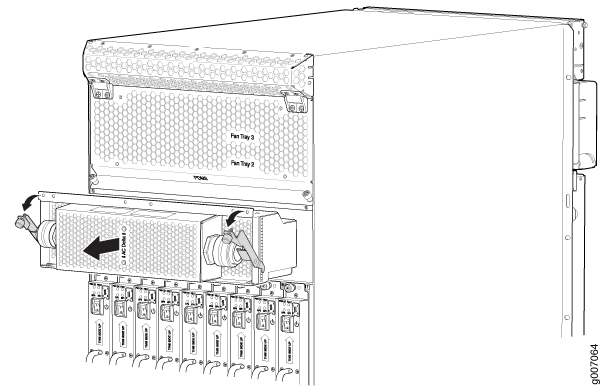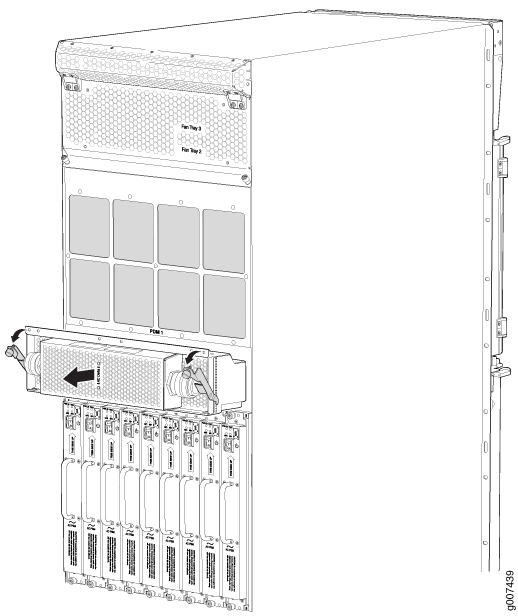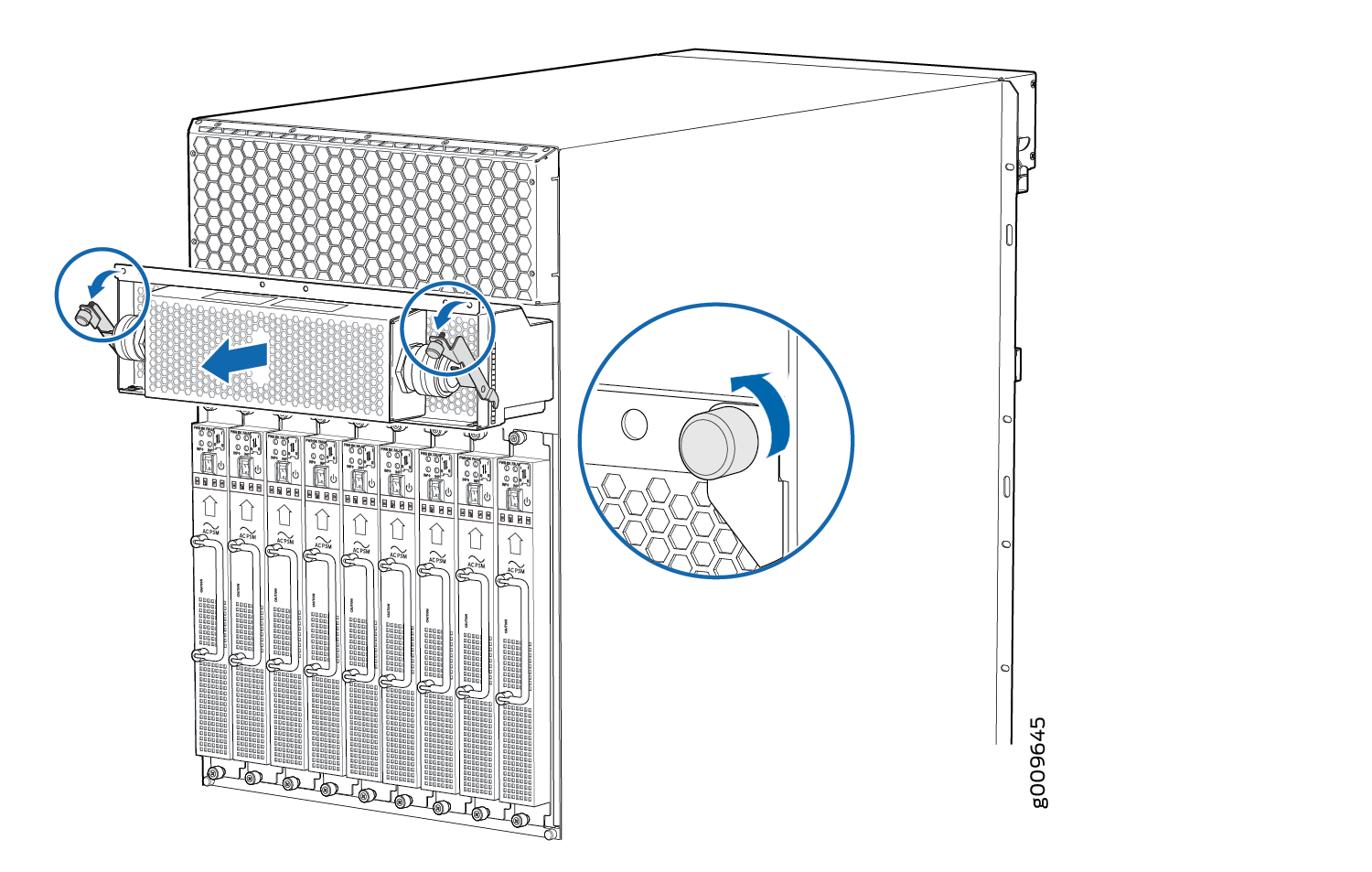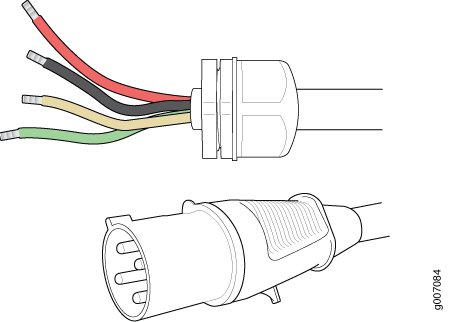Before you install a three-phase delta AC power distribution
module (PDM), be aware of the following:
Warning: Before performing AC power procedures, disconnect all
power sources. To ensure that all power is off, locate the circuit
breaker on the panel board that services the AC circuit, switch the
circuit breaker to the off position, and tape the switch handle of
the circuit breaker in the off position.
CAUTION:
To maintain proper cooling and prevent thermal shutdown
of the operating power supply unit, each PDM slot must contain either
a PDM or a blank panel. If you remove a PDM, you must install a replacement
PDM or a blank panel shortly after the removal.
Note: After powering off a PDM, wait at least 60 seconds before
turning the circuit breaker back on.
Note: The PDMs are hot swappable in a redundant configuration.
However, you cannot switch from one type of PDM (AC or DC) to another
while the system is on.
Each three-phase delta AC PDM weighs approximately 12
lb (5.44 kg). To install a three-phase delta AC PDM:
- Make sure that the voltage across the AC power source
cord is 0 V and that there is no chance that the cord might become
active during the installation process.
- Attach an electrostatic discharge (ESD) grounding strap
to your bare wrist, and connect the strap to one of the ESD points
on the chassis.
- [Optional]—If you are switching from a DC PDM to
an AC PDM, see Converting an MX2000 Router
Between AC and DC Power for instructions on how to change
the setting on the internal bar of the power distribution unit (PDU)
cage to AC.
- Pull the locking levers on either side of the faceplate
away until they stop.
- Using both hands, slide the PDM into the chassis until
you feel resistance (see Figure 6Figure 7,
and Figure 8).
- Push the lock levers until they make contact with the
PDM faceplate.
- Tighten the two captive screws on the locking levers of
the PDM faceplate to secure the PDM in the chassis. Apply between
10 lb-in. (1.13 Nm) to 12 lb-in. (1.35 Nm) of
torque to each screw. Do not overtighten the screws.
- Using a number 2 Phillips (+) screwdriver, loosen the
four screws on the cover of the metal wiring compartment that protects
the AC terminal block.
Figure 6: Installing a Three-Phase
Delta AC Power Distribution Module (MX2020)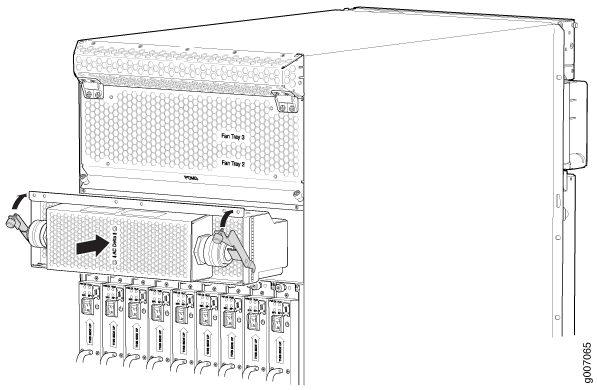
Figure 7: Installing
a Three-Phase Delta AC Power Distribution Module (MX2010)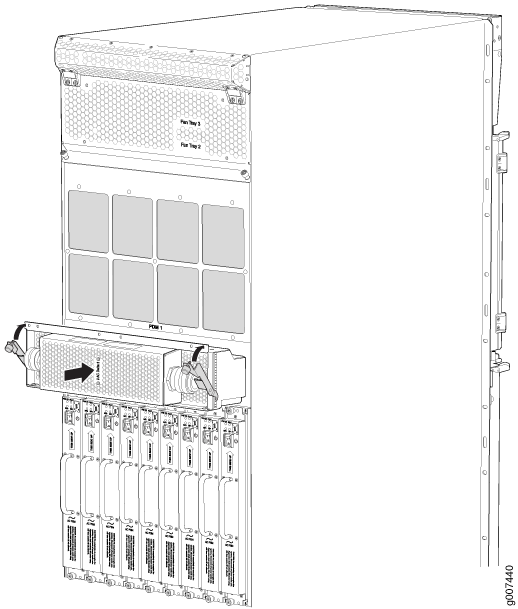
Figure 8: Installing
a Three-Phase Delta AC Power Distribution Module (MX2008)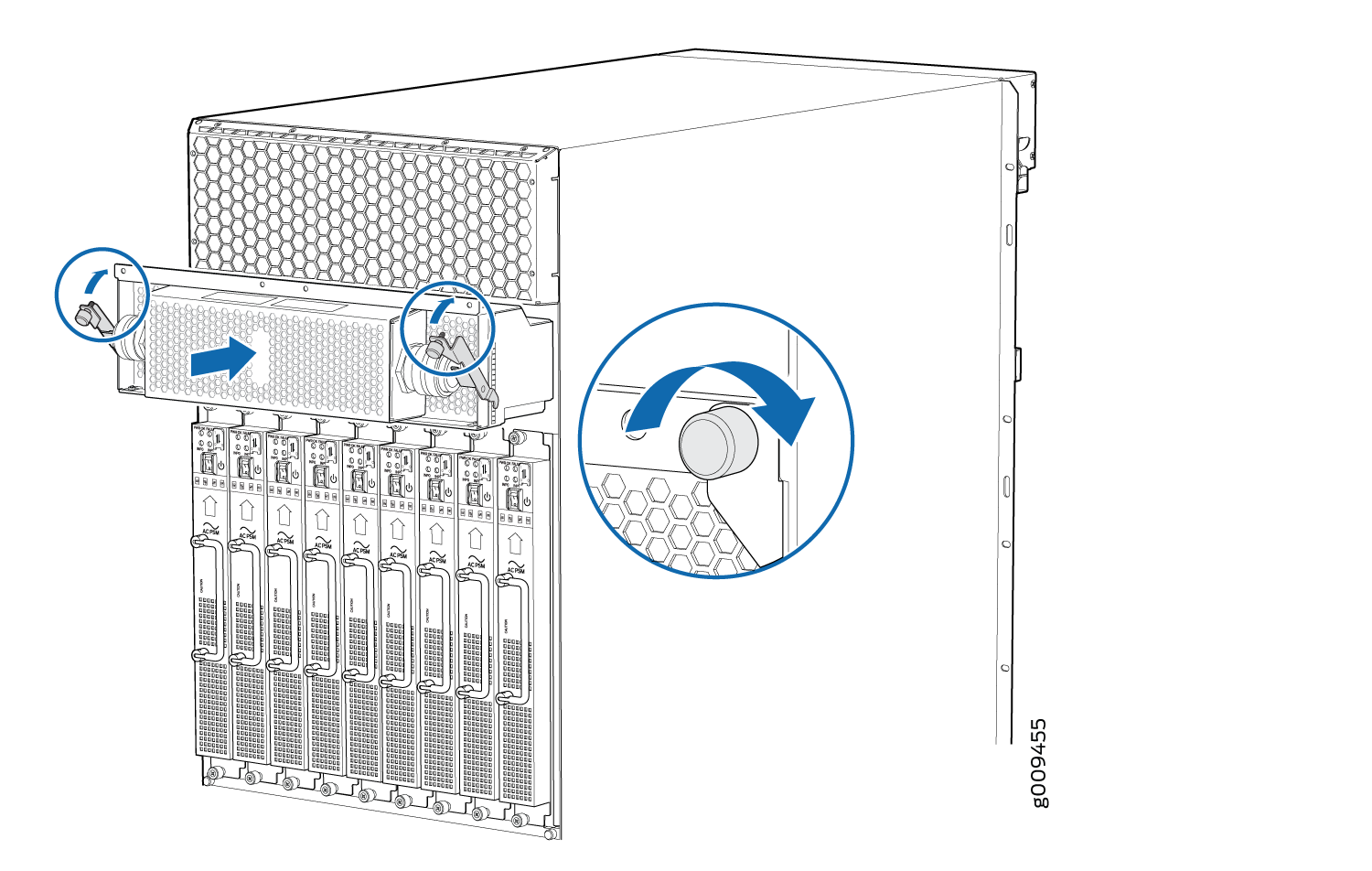
- Remove the cover of the metal AC wiring compartment.
- Unscrew the retaining nut from the AC power cord.
- Place the retaining nut inside the metal wiring compartment.
- Insert the wires of the AC power cord through the hole
of the retaining nut and rubber grommet.
- Insert the wires of the AC power cord through the hole
of the metal wiring compartment.
- Connect the wires to the AC terminal block on the three-phase
delta AC PDM (see Figure 9). Loosen each of the input terminals or grounding point screws,
and insert the wire into the grounding point or input terminal, and
tighten the screw (see Table 1 for approved AC wire gauge).
To insert wires into the terminal block that serves six
PSMs:
Insert the grounding wire into the grounding point labeled GND.
Insert the wire labeled L1 into the
input terminal labeled A1.
Insert the wire labeled L2 into the
input terminal labeled B1.
Insert the wire labeled L3 into the
input terminal labeled C1.
Figure 9: Connecting
Power to a Three-Phase Delta AC Power Distribution Module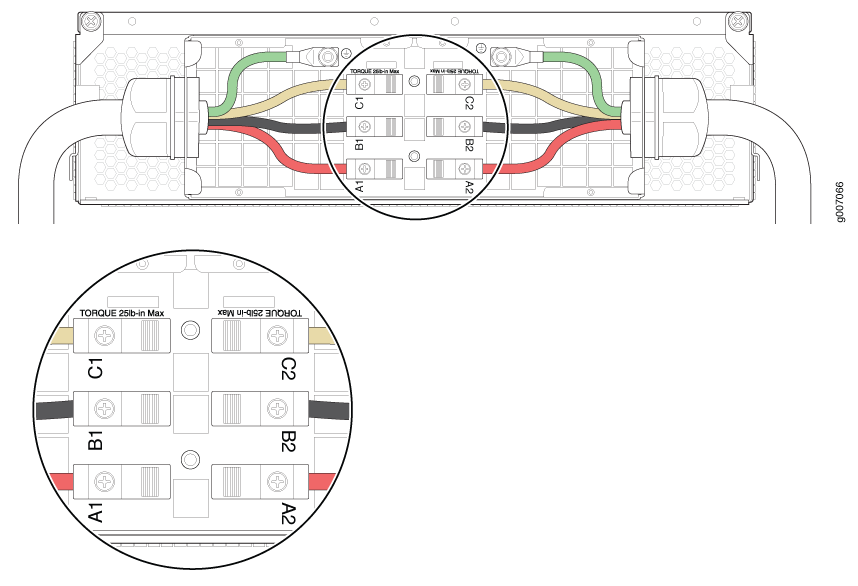
Note: The three-phase delta AC PDM terminal blocks will be flipped
depending on which slot the PDM gets plugged into.
Note: The color of each AC power wire might vary. The MX2000
chassis is not sensitive to phase rotation sequence—either clockwise
or counterclockwise will operate correctly.
CAUTION:
Wire label configuration is for Juniper Networks supplied
cable only. If you are using your own cable, make sure you use the
proper connections.
To insert wires into the terminal block that serves three
PSMs:
Insert the grounding wire into the grounding point labeled GND.
Insert the wire labeled L1 into the
input terminal labeled A2.
Insert the wire labeled L2 into the
input terminal labeled B2.
Insert the wire labeled L3 into the
input terminal labeled C2.
Note: The terminal connections have either slotted screws or
hex screws. Use a 1/4-in. slotted screwdriver for the slotted screws.
Use a 5/32-in. (4 mm) Allen wrench for the 5/16-in. hex screws.
Warning: To protect power supplies from input voltage that might
be caused by mis-wired PDMs, before reinstalling the metal cover to
the wiring compartment, apply AC voltage to the PDM (with the PSM
power switch turned off). Verify that the two LEDs on the PDM are
lit green and that the AC voltage between AC terminal blocks A1-B1,
B1-C1, C1-A1, A2-B2, B2-C2, and C2-A2 for three-phase delta PDM is
not more than 264 VAC when measured with a digital voltage meter
(DVM). Then turn off the AC breaker to remove power from the PDM and
install the metal cover.
Note: Three-phase delta AC wire assembly kits can be purchased
from Juniper Networks.
Table 1: Supported Three-Phase Delta AC Wire Gauge| Wire Gauge |
Description |
4 x 6-AWG or equivalent
|
4 conductor wires, each wire is 6-AWG
|
Note: We recommend that you use the proper gauge wire in order
for the cable clamps to hold the AC cables. Using smaller gauge wiring
will result in the cable clamps not tightening properly.
Warning: Power connections must be performed by a licensed electrician
only.
- Verify that the power cord wire connections are correct.
- Screw the retaining nut onto the AC power cord to secure
it to the metal wiring compartment.
- Using a number 2 Phillips (+) screwdriver, tighten the
four captive screws on the metal AC wiring compartment.
- Verify that the AC power cord does not touch or block
access to router components, and that it does not drape where people
could trip on it.
- Remove the ESD grounding strap from the ESD points on
the chassis. Connect the strap to an approved site ESD grounding point.
See the instructions for your site.
- Connect the AC power cord plug to the power source.
- Switch on the customer-site circuit breakers to provide
voltage on the AC power cord.
- Remove the ESD grounding strap from the approved site
ESD grounding point. See the instructions for your site. Reconnect
the strap to one of the ESD points on the chassis.
- Verify that the LED on the PDM faceplate is lit steadily,
indicating that the AC terminal block is receiving power.
